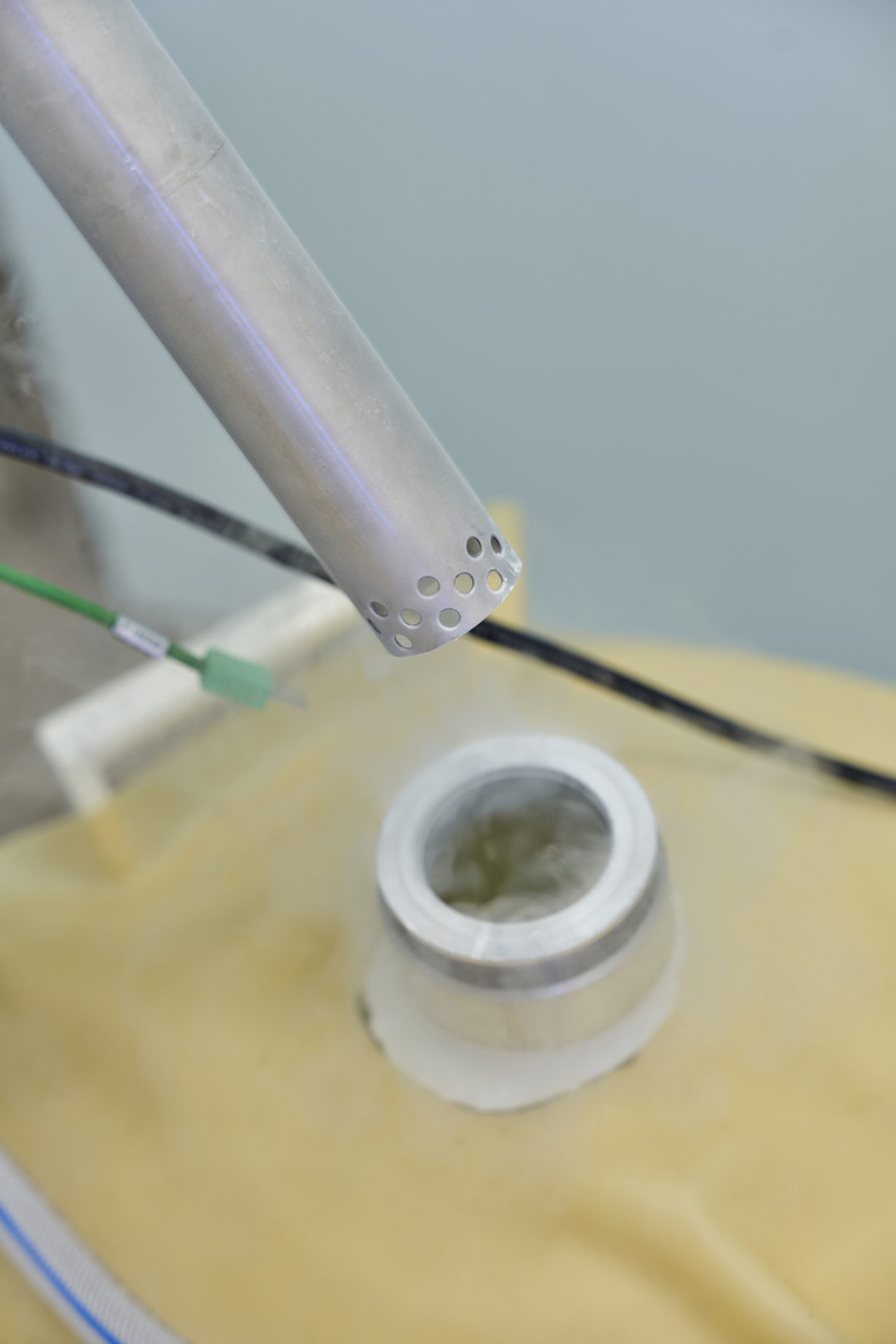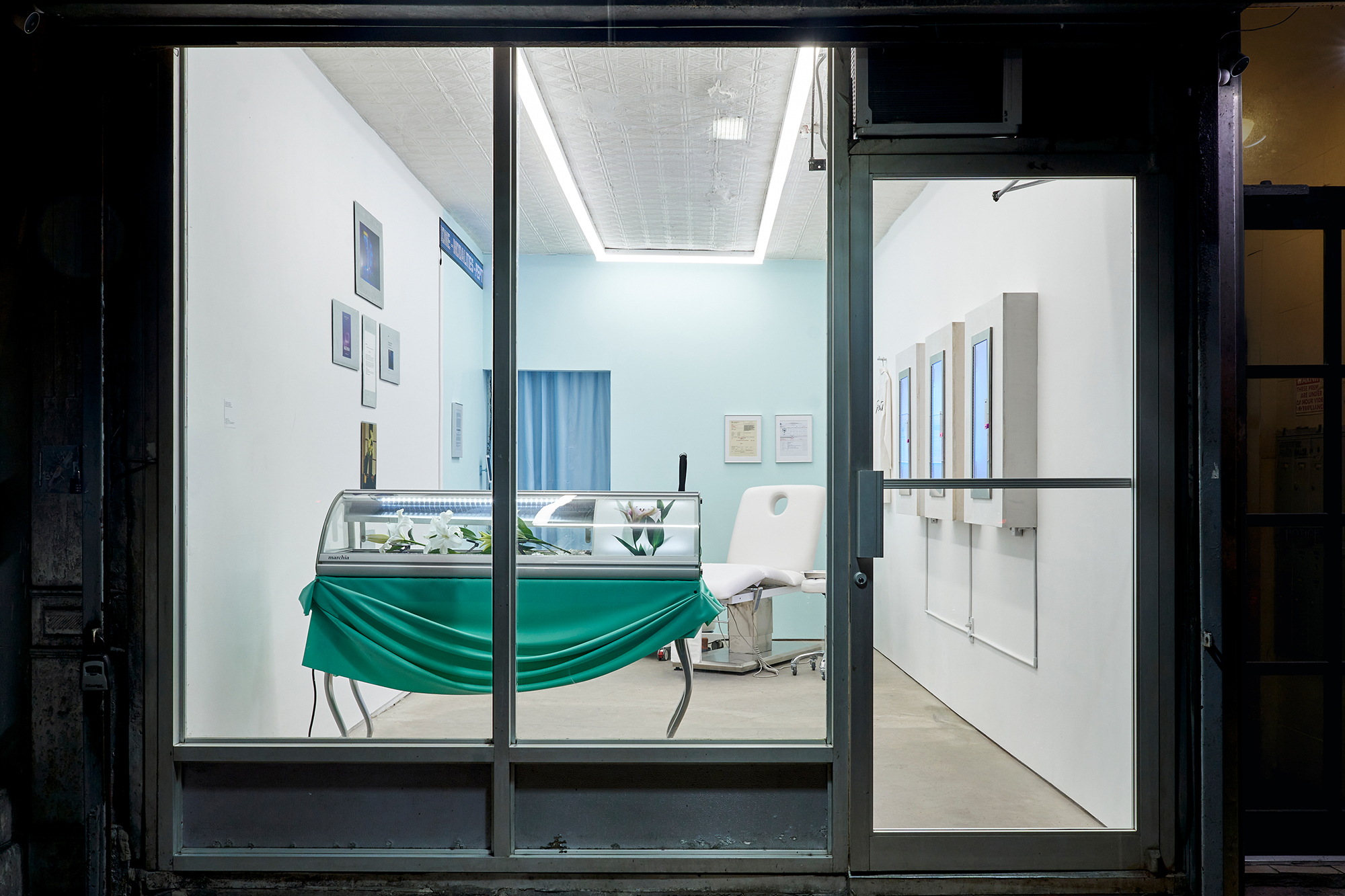Our critic goes for a cryogenic facial in a Lower East Side gallery
In June I got a facial in a Lower East Side gallery. It was part of Jo Shane’s solo presentation Lilies Into the Void. Shane’s perplexing exhibition at Blade Study featured an installation resembling an aesthetician’s office, which served as the backdrop of a performance series titled Seen/Unseen (2025). For this, on select days of the week, Shane administered topical cryotherapy – whereby nitrogen-cooled air is applied to the skin with the aim of constricting blood vessels and reducing inflammation in the treated area – on visitors in 30-minute sessions. The cold treatment seemed apropos, since the city was wilting under record-breaking heat (again). At the same time, this free, unlicensed ‘clinic’ with its staff of one, offering amateur therapeutic services amid the erosion of American democracy, mass layoffs, tariff wars and immigration raids, embodied a kind of intransigent postirony I found intellectually irresistible.
Shane’s exhibition, the pretext for the facials, was polycrisis-themed. The mise-en-scène included sterile teal walls, a white-leather treatment-chair and a metal pan strewn with handfuls of red horse-pills. Three fire extinguisher cases housed supplement bottles labelled with the artist’s name. Terms denoting various therapeutic modalities, from ‘senescent cell cleansing’ to ‘mitochondria strengthening’, ticked in capital letters across an LED panel near the ceiling that could have been clipped from Jenny Holzer’s 2024 Guggenheim exhibition, in which excerpts from Truisms (1978–87) and Inflammatory Essays (1979–82) doomscrolled along the ramps of the museum’s rotunda. Shane’s INFLAMMATION (2025), a sheet of white paper encased in a clinical silver frame, bluntly declared the conceptual underpinning of the show. It read, ‘WE ARE INFLAMED ON EVERY LEVEL / The planet is inflamed, individual bodies are suffering from inflammation and autoimmune response. We are politically and socially in a free fall of inflammation.’ Another text piece, printed on galvanised metal hanging next to a graphic for tech bro-biohacker Bryan Johnson’s Don’t Die Summit, pleaded, ‘So many people have thyroid issues, autoimmune disease, digestive system issues, cancer – like wtf is going on?!’

To her credit, Shane didn’t say any of this during our Friday afternoon appointment. In fact, she didn’t say much at all. When I entered the makeshift med spa, the artist Al Freeman was leaving her session. Shane was wearing a white lab coat with the word ‘Facilitator’ scrawled in cursive on the back. Although it was my first time meeting her, there was very little preamble to our one-on-one transaction. I was instructed to remove my shoes and recline in the treatment chair. She was not allowed to make claims about the effects of cryotherapy, she said, but she told me it was evident “from people’s responses” that the facial produced “a synergistic effect for the whole body”, subtly priming me to react in kind. She proceeded to apply air to my face with a handheld wand connected to a whirring Cryo-T Elephant chamber. The current from the wand was neither very strong nor very cold, likely for legal reasons. Over my closed eyes, browbones, cheeks and nose, I could feel the artist’s hand drawing circles. It was a tad skittish.
It became clear that, no matter what the limited-edition towels embroidered with the word ‘Participant’ hanging from the treatment chair wanted me to think, I wasn’t ‘participating’ in Shane’s performance. That is, I was neither coauthoring the work, per Grant Kester, nor being moulded to actualise the artist’s ideas, à la Claire Bishop, though something to the latter effect transpired during the show’s opening programme, when a group of dancers and performance artists were directed to occupy the installation and let their bodies have an ‘authentic experience with the chair’, according to Sigrid Lauren, the programme’s movement consultant and creative producer. (What resulted was a lot of writhing, stretching and scooting.) I was instead on the receiving end of an experience that was neither expressive nor ritualistic but transactional in the most straightforward sense. A nonart friend who came to watch my cryo session wondered how one could go about monetising such a performance. Some people might opt for artist-administered Botox, they thought, or artist-improvised dishes, the point being that one would purchase the service plus the ‘artsy-ness’. I thought of Coda, the pay-as-you-wish hair salon that popped up for a weekend in March at Lubov, where the commodified presence of artists – among them Chloe Wise and Amanda Ba – came with the cut. I also recalled that the former SoHo restaurant, FOOD – ran by artists Carol Goodden, Gordon Matta-Clark and Tina Girouard – is being ‘revived’ by Lucien Smith, who plans to open his profit-focused version of the eatery in Dimes Square this summer.

Shane, of course, has a different goal in mind. “The idea is to be nurturing to people and to create accessibility,” she told me after our session. Ultimately, the difference between Seen/Unseen and an actual cryo appointment was meant to be minimal. “I hope it’s the same experience,” she stressed. “I’m just trying to offer the same experience you would otherwise pay $50 to $70 for.” Her earnestness wasn’t scripted; nothing about her performance felt parodic or disingenuous either. Back in 1990, she told BOMB, ‘Being ironic is partially a defense mechanism to obscure the feelings of extreme emotional clichés… What I’m doing is operating on the utopian cliché.’ At Blade Study, Shane still seemed to be operating on this deliberate – and increasingly quaint – utopian principle. To be sure, she is no stranger to the systemic ills of American healthcare: her previous work included readymade monuments to friends she lost to the AIDS crisis. But her temple to for-profit holistic health here obfuscated the dysfunctions of one system with the exoticism of another.
As an artwork, Seen/Unseen was so obstinately literal I had to applaud it. As a product pitch, the performance was as effective as any free sample: another participant I spoke to said they’d never tried professional cryo before but “might after this experience”. What worries me is not when art intentionally and unironically occupies the cliché of marketing, which it’s been doing splendidly since Warhol, but the thought that, under the ether of rarefied ‘experience’, we may lose our healthy skepticism towards both art and advertising, the way one might drift off at the aesthetician’s office mid-treatment, under the gentle hand of a true believer.
